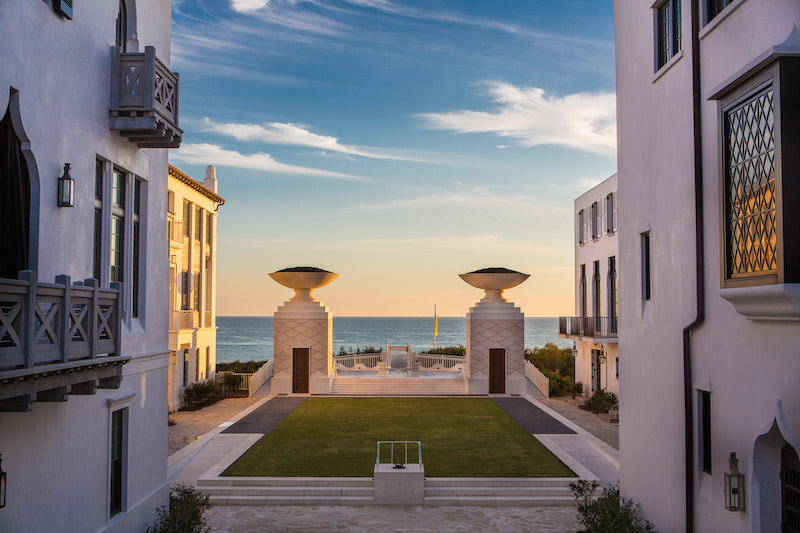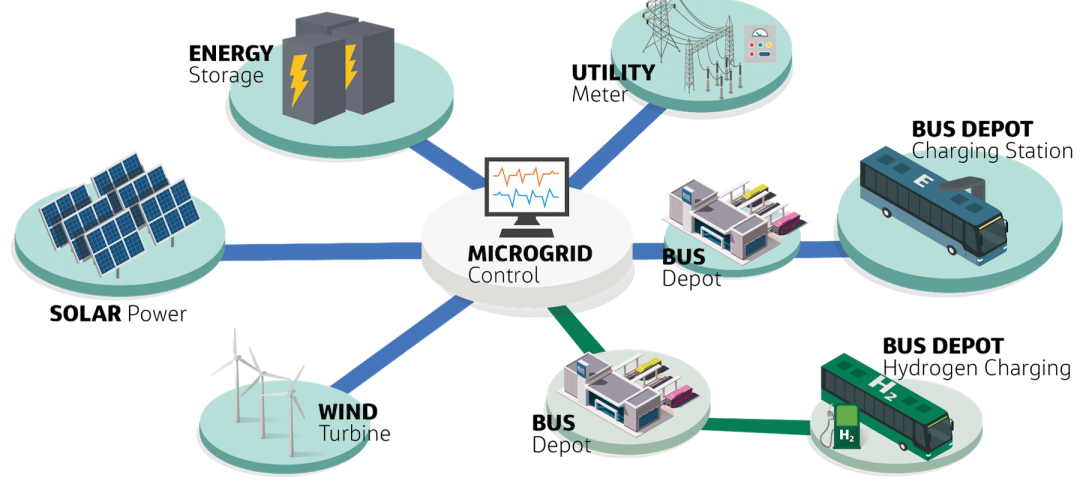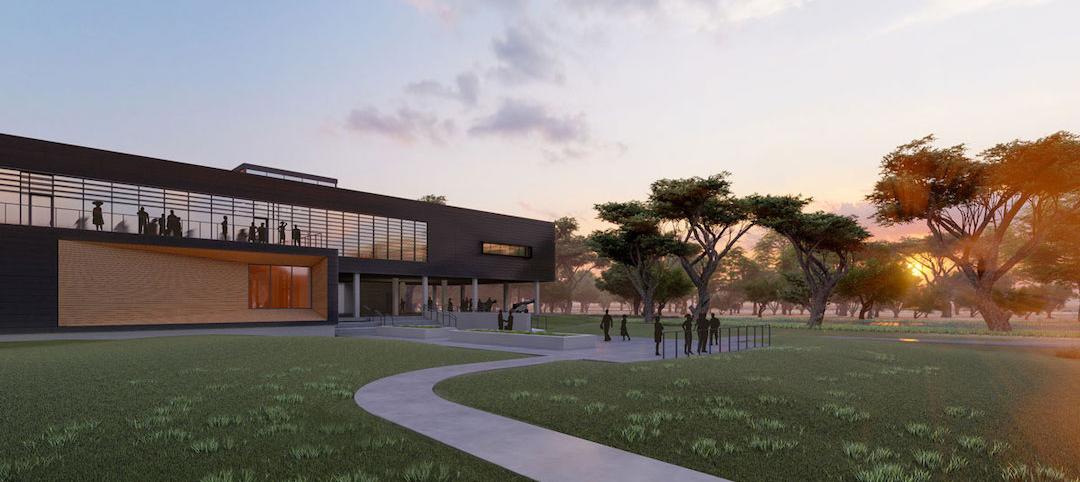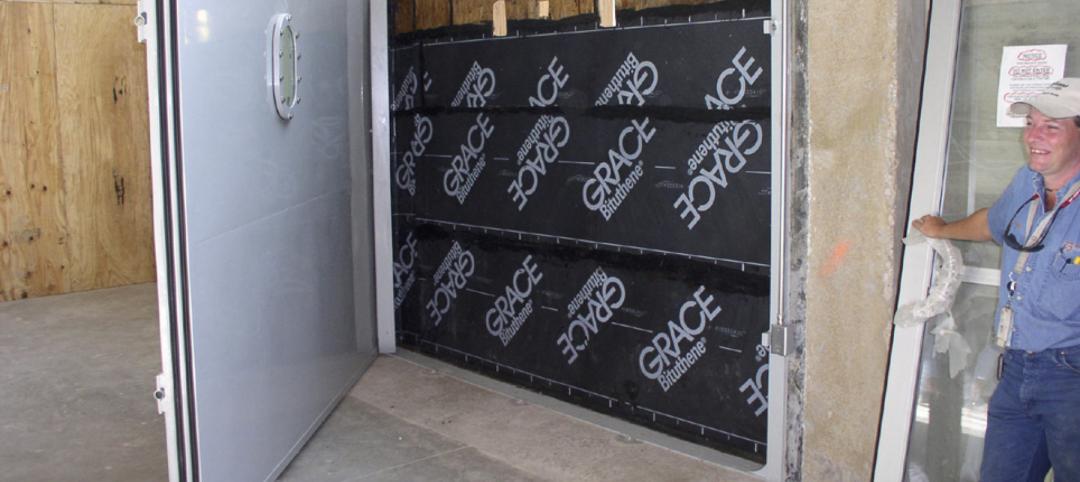Thirteen years ago, the Alabama-based developer EBSCO broke ground on Alys Beach, a 158-acre residential community that was the last piece of available beachfront property on Florida’s Panhandle along the Gulf of Mexico.
Delays related to the weather and economy slowed construction for several years, but this luxury community, where home price range from $2 million to more than $6 million, now appears to be in fuller swing.
Entitled for 899 housing units, Alys Beach to date has sold 215 properties (homes and/or lots), has completed 115 homes, has 60 under construction, and 50 more under development.
The community was the first to be certified by the Florida Green Building Council. It was also the first community in the world to require that its structures be built to the resilient engineering and construction standards established by the Insurance Institute for Business & Home Safety’s FORTIFIED HOME program.
Those standards are based on 20 years of storm-damage research that IBHS has accumulated and analyzed. Depending on the level at which the structures are built (gold, silver, or bronze), these homes can withstand winds and rain up to 150 miles per hour. After a third-party evaluator assesses the home’s construction or renovation, the owner receives a designation certificate from IBHS that’s good for five years.
Alys Beach—which is named after Alys Robinson Stephens, the wife of EBSCO’s cofounder Elton Bryson Stephens, Sr., who bought this land in 1978—is noteworthy in that it has its own in-house construction company, Alys Beach Construction, which continues to be the GC on this project.
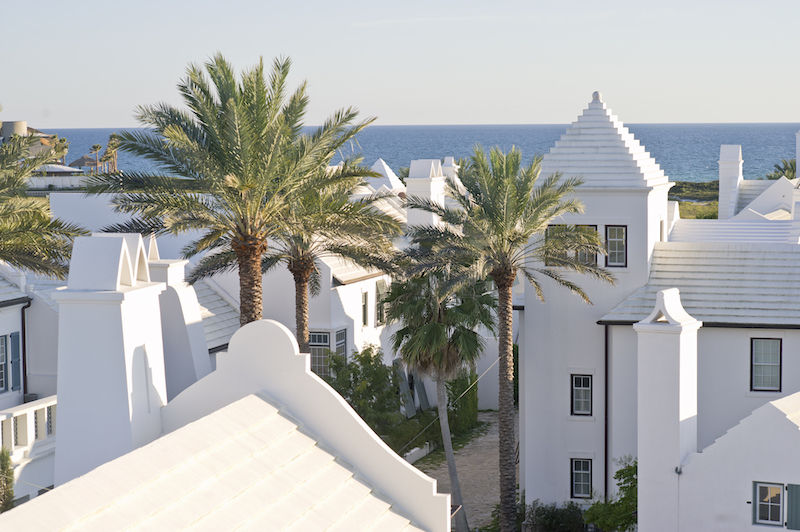 All-masonry construction is both a resilient and aesthetic choice by Alys Beach's developer. Image: Alys Beach
All-masonry construction is both a resilient and aesthetic choice by Alys Beach's developer. Image: Alys Beach
Because the community’s home construction is all masonry anyway, building to FORTIFIED HOME’s standards—which in other markets have increased the final price of a house by as much as one-fifth—has added only around 5% to the cost of an Alys Beach house, says Marieanne Khoury-Vogt, a Principal, with husband Eric Vogt, in Khoury & Vogt Architects in Panama City, Fla., Alys Beach’s architect and designer. She’s also the town architect.
Many of the homes in Alys Beach are vacation houses for their owners, and higher construction standards weren’t hard to sell them on, Khoury-Vogt says. “It gives them peace of mind against the threat of hurricanes.”
Miami-based Duany Plater-Zyberk Partners planned Alys Beach as a Traditional Neighborhood Development that emphasizes walkability. Buildings are grouped into small compounds and unified by perimeter walls, which are higher and more formal in urban zones, lower and more rustic in rural areas.
Construction is denser near the beach and highway, and sparser near to the 20 acres of protected wetlands to the north of the community. All streets lead to the beach, with views of the water kept clear for as great a distance as possible. The main street also leads to a waterfront plaza.
The buildings’ Bermuda architectural style is combined with a patio house type that originated in Antigua, and a courtyard building type that emanated from California.
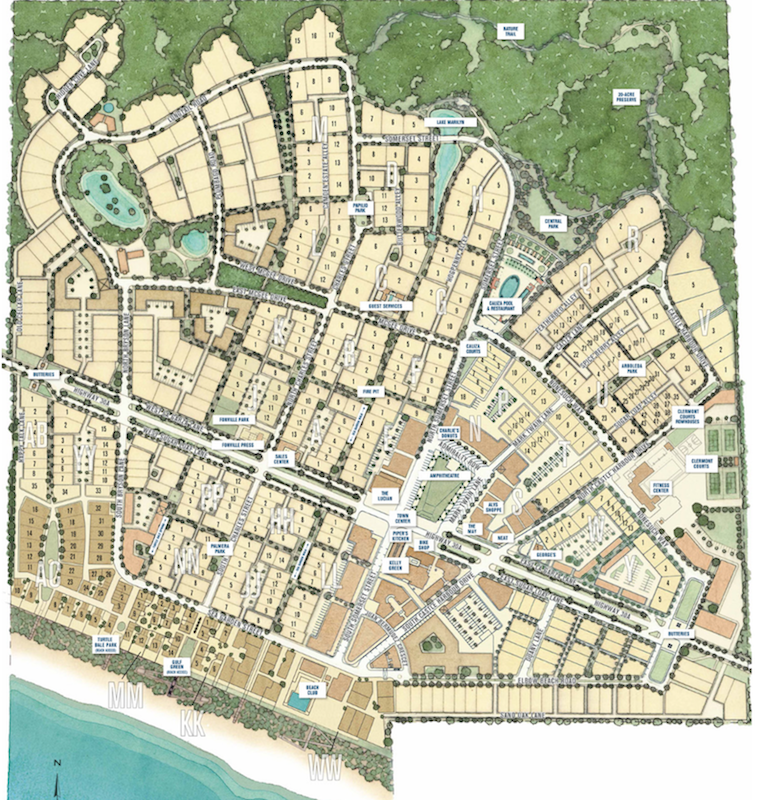
An aerial rendering of the layout of Alys Beach, whose 158 acres straddle the Gulf of Mexico to the south and protected wetlands to the north. Image: Alys Beach
Cobblestone streets allow rainwater to filter naturally into soil, which in turn reduces runoff. Khoury-Vogt notes that the community’s underground utilities are accessible for maintenance and repair via street-level removable paver stones that are strategically located through the neighborhood.
While some owners have installed geothermal systems, renewable power so far has been an outlier at Alys Beach. Khoury-Vogt says that, to her knowledge, only one owner has chosen to install solar panels.
(Compare that to another Florida community, the 18,000-acre Babcock Ranch in Palm Beach Gardens, which broke ground last year on its first phase of 1,000 homes. This community’s developer Kitsen & Partners donated land to Florida Power & Light to build a 440-acre solar farm there to power what is projected to be nearly 20,000 homes over the next two decades.)
Khoury-Vogt says that Alys Beach’s buildout should be completed by 2036.
Related Stories
Sponsored | Steel Buildings | Jan 25, 2022
Multifamily + Hospitality: Benefits of building in long-span composite floor systems
Long-span composite floor systems provide unique advantages in the construction of multi-family and hospitality facilities. This introductory course explains what composite deck is, how it works, what typical composite deck profiles look like and provides guidelines for using composite floor systems. This is a nano unit course.
Sponsored | Reconstruction & Renovation | Jan 25, 2022
Concrete buildings: Effective solutions for restorations and major repairs
Architectural concrete as we know it today was invented in the 19th century. It reached new heights in the U.S. after World War II when mid-century modernism was in vogue, following in the footsteps of a European aesthetic that expressed structure and permanent surfaces through this exposed material. Concrete was treated as a monolithic miracle, waterproof and structurally and visually versatile.
Sponsored | Resiliency | Jan 24, 2022
Norshield Products Fortify Critical NYC Infrastructure
New York City has two very large buildings dedicated to answering the 911 calls of its five boroughs. With more than 11 million emergency calls annually, it makes perfect sense. The second of these buildings, the Public Safety Answering Center II (PSAC II) is located on a nine-acre parcel of land in the Bronx. It’s an imposing 450,000 square-foot structure—a 240-foot-wide by 240-foot-tall cube. The gleaming aluminum cube risesthe equivalent of 24 stories from behind a grassy berm, projecting the unlikely impression that it might actually be floating. Like most visually striking structures, the building has drawn as much scorn as it has admiration.
Sponsored | Resiliency | Jan 24, 2022
Blast Hazard Mitigation: Building Openings for Greater Safety and Security
Microgrid | Jan 16, 2022
Resilience is what makes microgrids attractive as back-up energy controls
Jacobs is working with clients worldwide to ensure mission critical operations can withstand unexpected emergencies.
Sponsored | BD+C University Course | Jan 12, 2022
Total steel project performance
This instructor-led video course discusses actual project scenarios where collaborative steel joist and deck design have reduced total-project costs. In an era when incomplete structural drawings are a growing concern for our industry, the course reveals hidden costs and risks that can be avoided.
Resiliency | Oct 19, 2021
Achieving resiliency through integrated design
Planning for and responding to the effects of adverse shocks and stresses is typically what architects and engineers have always thought of as good standard design practices.
Resiliency | Aug 19, 2021
White paper outlines cost-effective flood protection approaches for building owners
A new white paper from Walter P Moore offers an in-depth review of the flood protection process and proven approaches.
Resiliency | Aug 19, 2021
White paper outlines cost-effective flood protection approaches for building owners
A new white paper from Walter P Moore offers an in-depth review of the flood protection process and proven approaches.
Resiliency | Aug 4, 2021
A new team forms to assess climate change’s effects on the built environment
Arup and First Street Foundation are using extensive datasets to develop risk-mitigating resilience solutions.


